![]()
The best yoga poses for mental health
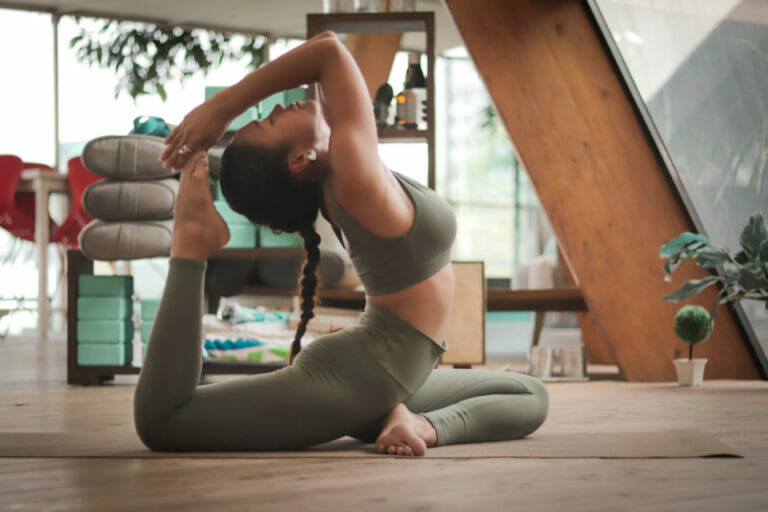
Lyn Savage is a qualified yoga instructor who specialises in teaching students to connect to themselves and focus on breathing as they move and learn to feel their bodies. She’s here to share the best yoga poses for mental health.
She is also one of our amazing Wellness experts and has shared some of her knowledge on how yoga can help with mental health….
All yoga poses aid in mental health, and the primary reason for the benefit is the unity we create through movement, uniting body, breath and mind.
We may perceive that these three can act independently from one another, but it is the practice of uniting them that brings in the benefits for mental health.
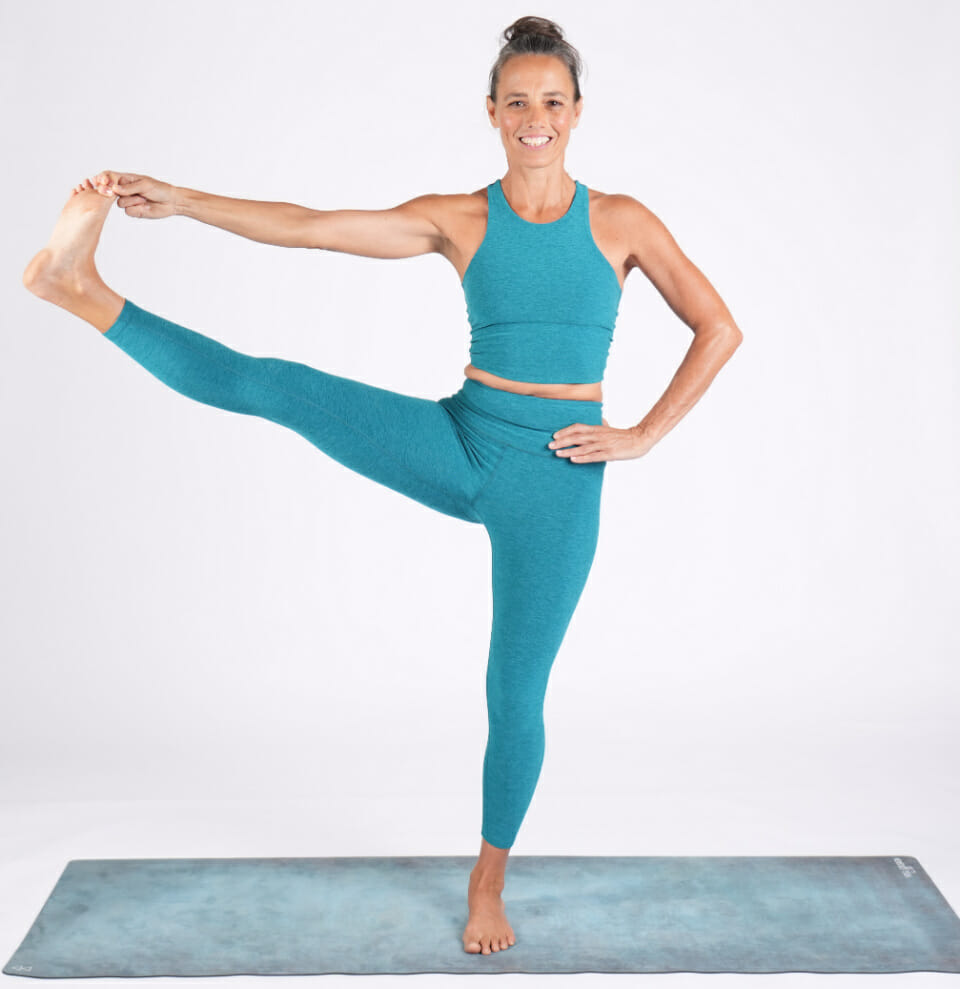
On an elementary level, we see yoga as flexibility and suppleness, and we judge a person’s ability on how long they can stay in a headstand, but in reality, this is all irrelevant.
Yoga is about feeling your body, regardless of the pose, feeling your breath as it moves through you and coordinating the two moving in unison.
What are the best yoga poses for mental health?
Whether you’re more into beginners yoga or have been visiting your yogi for years, do you know the specific yoga asanas that help with mental health issues?
Balasana – Child’s pose

Child’s pose is one of the best Yoga Asanas to stretch multiple body parts whilst also helping you focus on your breath and destress. This resting pose centres, calms, and soothes the brain while restoring balance and equilibrium to the body.
To do this pose, begin on your hands and knees, then with an inhalation, lean back and sit your bum on your feet. Ensure you also stretch your arms out in front of you, giving a good stretch to the whole body. Once in the curled-up seated position, you can either stay with your arms stretched in front of you or bring them back beside your hips.
Trikonasana Triangle Pose
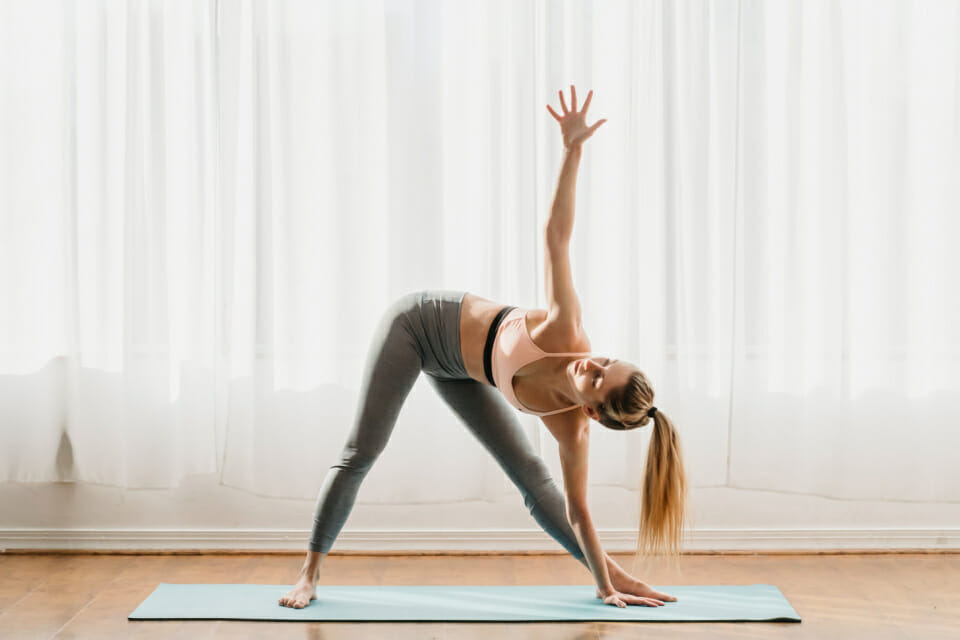
This is a challenging pose that pushes you past and edge. You ignite energy by shifting your body and affecting the flow, helping you feel more balanced and calm.
It requires deep concentration to keep focused and balanced, taking you out of your head and into your body.
To do this yoga pose:
- Stand up with legs just a bit more than shoulder distance apart.
- As you inhale, raise your right hand straight above your head with your right arm parallel to your right ear.
- As you exhale, bend your torso at the waist to your left side.
- Simultaneously slide your left arm down along your left leg as far down to your ankles as you can go without hurting yourself. Your right arm should be horizontal as your head is tilted left.
- Hold the pose for about 30 seconds with your knees and elbows straight, then on an inhale, straighten back to standing and repeat on the other side.
Viparita Karani – Legs up the Wall Pose

This pose is a much more calming pose and one that can bring you to a place of peace when your mind is in overdrive, or you are feeling anxious.
This simple inversion raises the legs above the heart, bringing a sense of calm through the body.
It is an excellent pose to do before bed as you release the mental intensity of your day.
To perform this simple pose, you just need to lay on the floor with your bum touching the wall and, as you inhale, walk your feet up the wall. Rest your legs flat against the wall and hold the pose for at least five minutes.
Savasana – Corpse pose
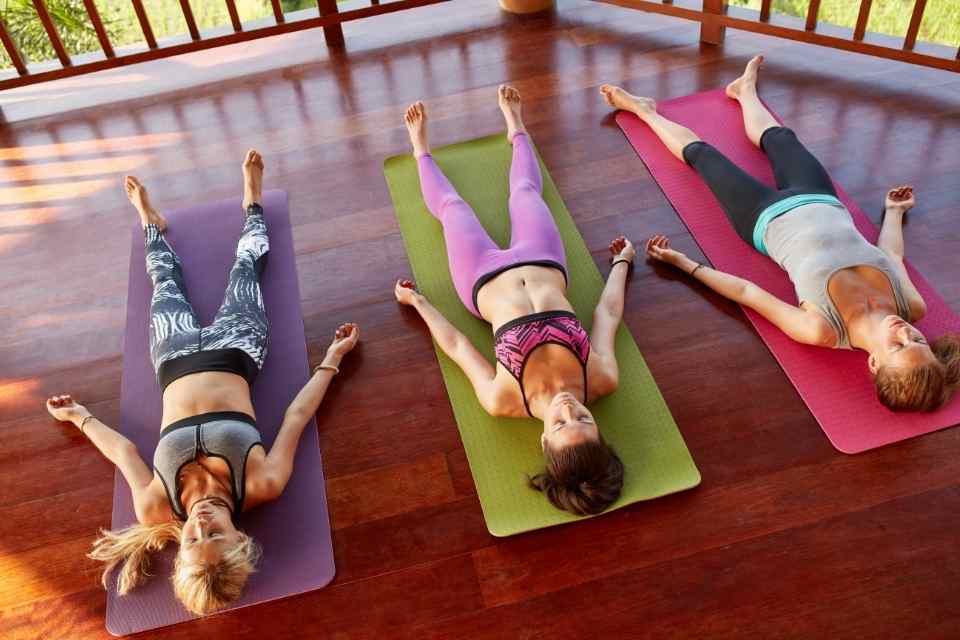
This is a great yoga pose to finish any yoga session due to its amazing stress relief benefits and ease of action. This pose is the perfect way to end a session because it also acts as a meditation that helps boost mental health and relax the body.
All you need to do is lay flat on your back, with your legs and arms relaxed but outstretched, keeping the body straight and hands facing palms up. Take a few big deep breaths and hold this pose for at least five minutes to get the full health benefits.
Why does yoga help mental health in the first place?
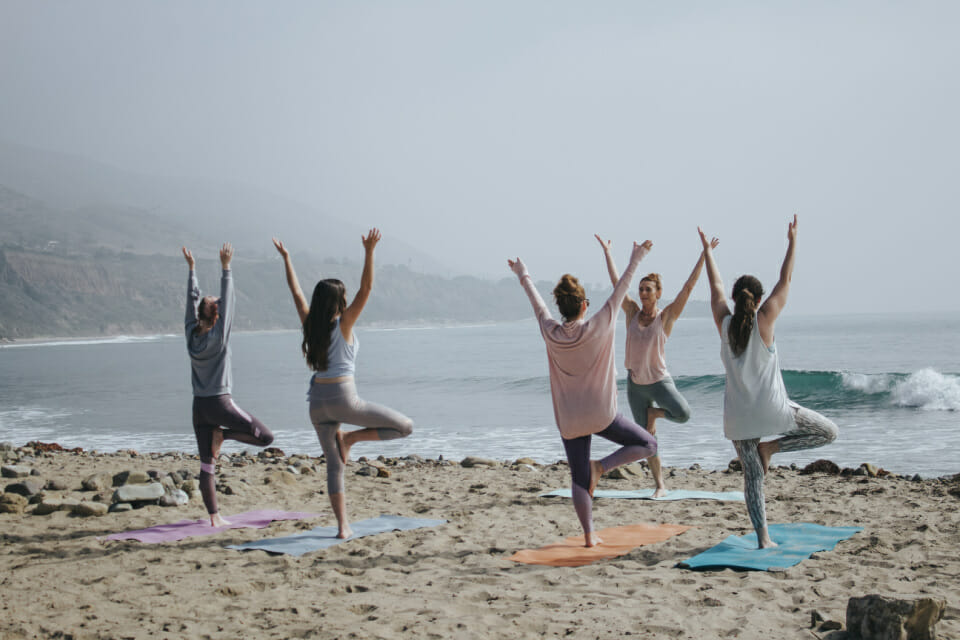
We are taught, through practice, to observe the qualities of the mind and how we can influence them.
Yoga teaches us to notice how we perceive things and to recognise the patterns that keep getting us into difficulties in life.
We learn how we create problems in our minds, and once we do this, knowing how we created the problem, we can learn how to free ourselves from it.
The key is perception. In any given situation, we perceive that we have understood what is going on and act accordingly.
We act according to our perception, and often that is incorrect. Our actions can result in unhappiness within ourselves and anyone else that may be affected.
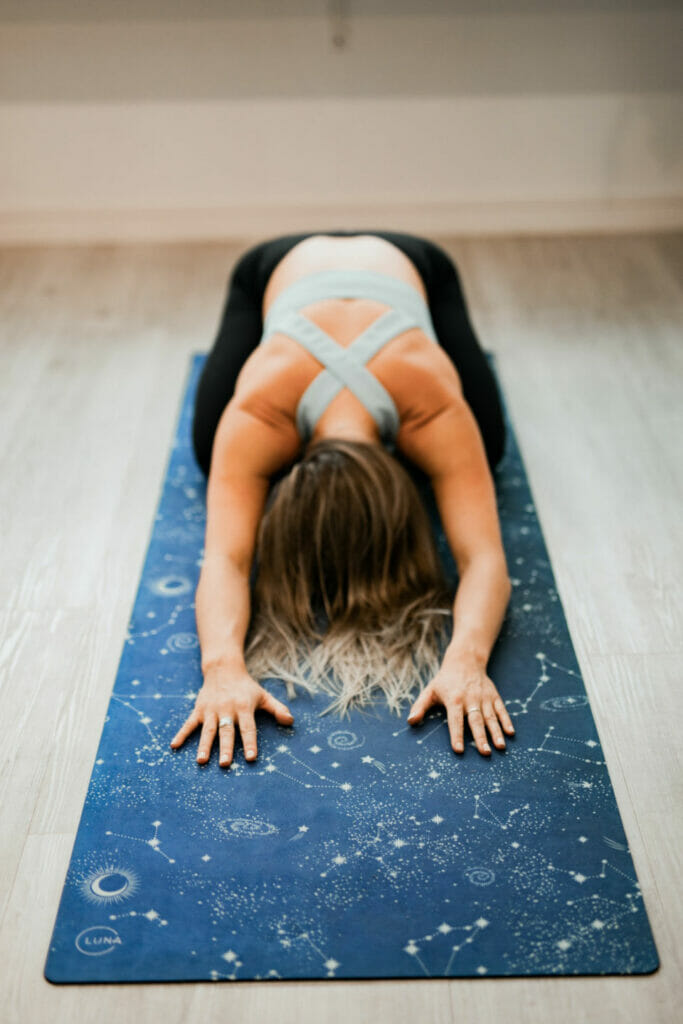
It can swing the other way too. A situation can present where we doubt our understanding and do nothing even though our actions could have been beneficial.
Our practise teaches us practical ways to start noticing our thoughts, patterns, and where they are being influenced by ignorance, fear, ego, hate or attachment.
These five things are the root of what stops us from seeing situations as they actually are.
The goal of yoga is to create clarity for us to act accordingly.
How does yoga help reduce stress and anxiety?
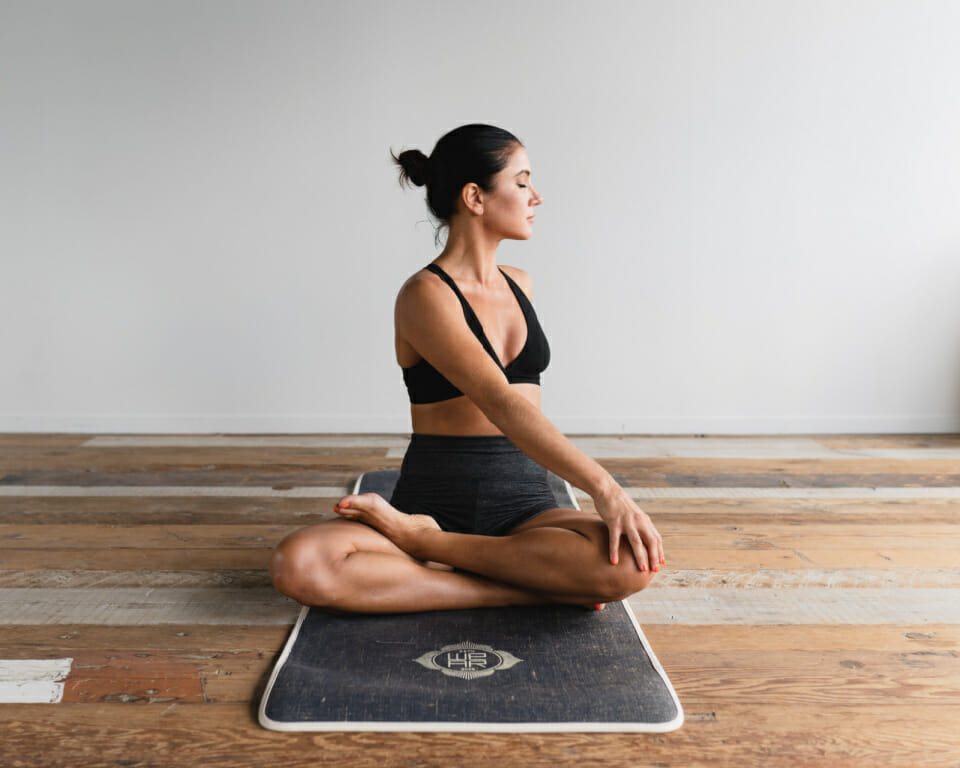
When looking at the best yoga poses for mental health, we need to first understand where the mental health issues can often stem from.
Our bodies have two states, fight or flight (sympathetic nervous system) and rest and digest (parasympathetic nervous system).
Our practise allows us to access the parasympathetic nervous system and find relief from stress and anxiety.
If we take our minds back to our ancestors, their days were spent in a state of rest and digest.
The only time they would access their fight or flight state would be when their lives were in imminent danger. Think lion chasing you…. Eeek
In modern society, however, we spend most of our time in this state. Characteristics of this state include:
- Tension
- Shallow breathing
- Rapid heart rate
Basically, our bodies are preparing for fight or flight.
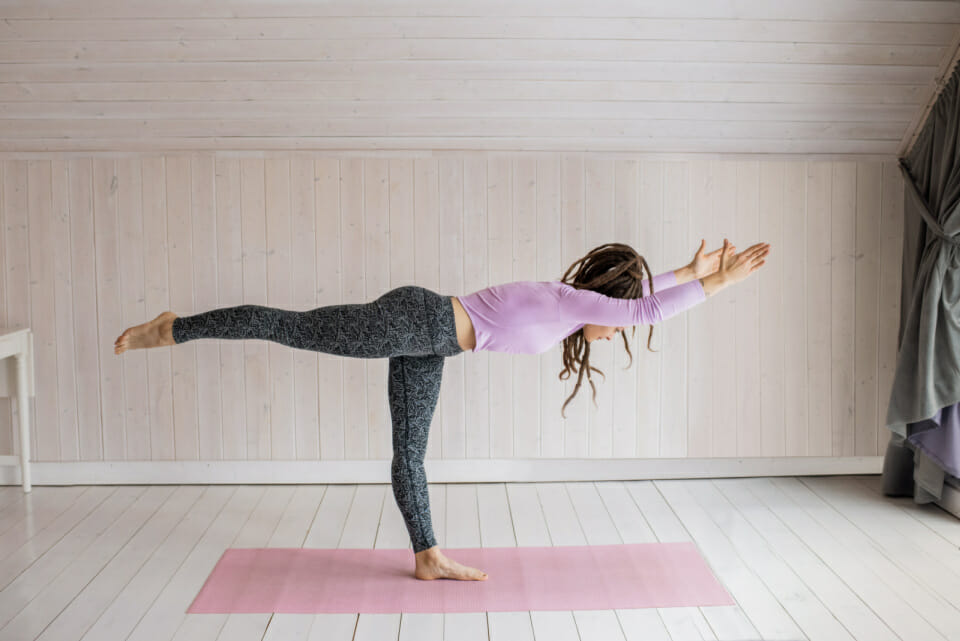
But unfortunately, it’s not because a lion is chasing us but rather because we are worried about how we are going to pay our mortgage or someone has cut in front of us in traffic.
The reasons we switch into this state are far too many to mention, but you get the idea.
Yoga brings awareness to the switch, and we can consciously choose to take ourselves back to a state of rest and digest.
We use breathing techniques during yoga to help lower our blood pressure or offer stress relief while getting added health benefits, including weight loss.
Beyond how the meditative aspects of yoga can help with your mental health issues, it can also help with your physical health. There are many benefits of yoga to your physical wellness, including alleviating back pain, helping with lower back or hamstring issues and helping with blood flow.
Get Access to gentle yoga workouts in the Healthy Mummy Wellness App
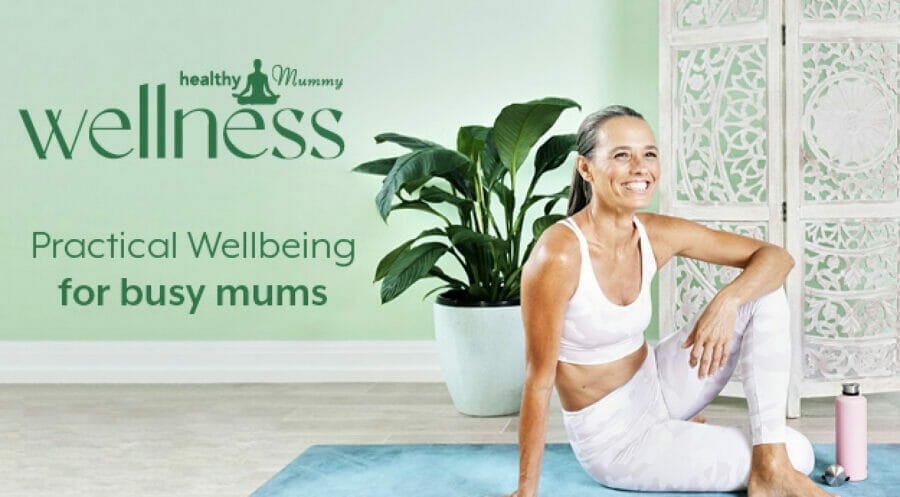
The Healthy Mummy Wellness app is built to support mums’ mental, physical and social well-being.
We have expert advice to help mums makeover their minds, transform their mood, manage their hormones, sleep better and engage with their family.
You can listen to podcasts, read blogs, work out with our trainers and find healthy, family-friendly recipes from the palm of your hand.



